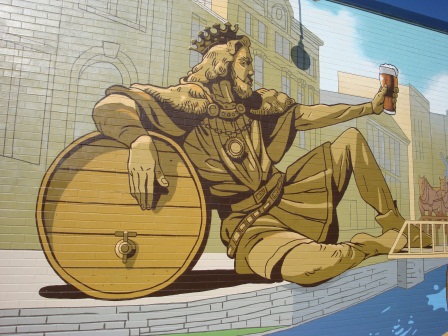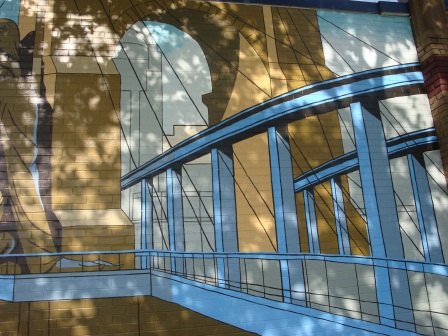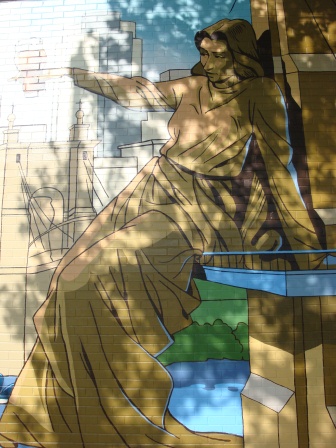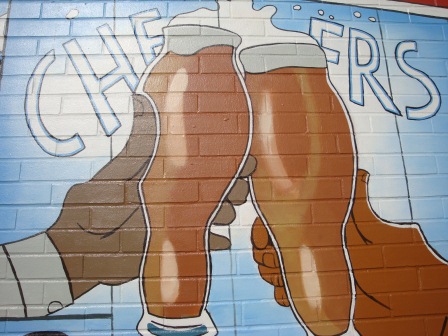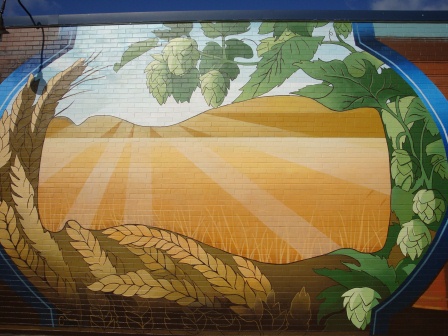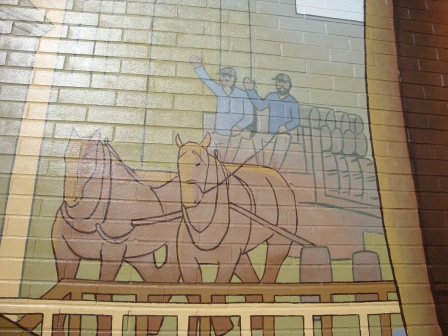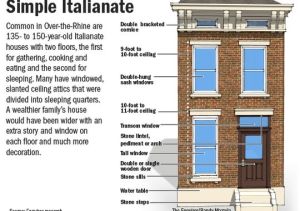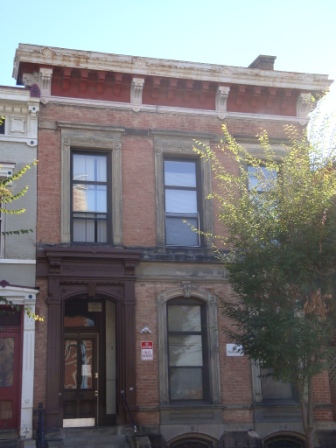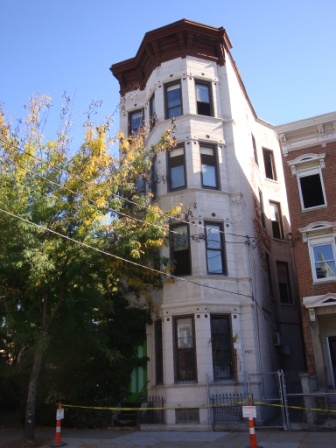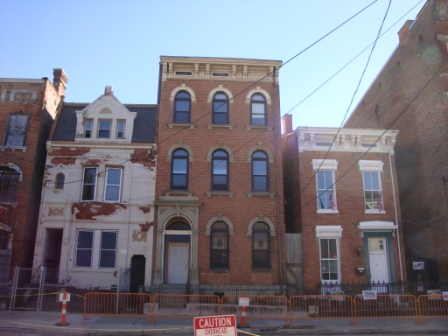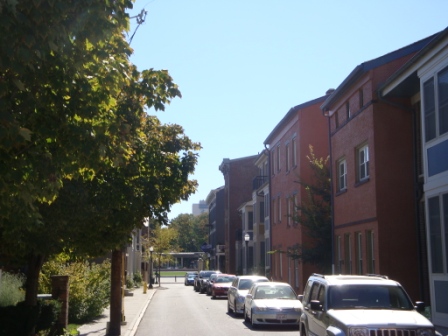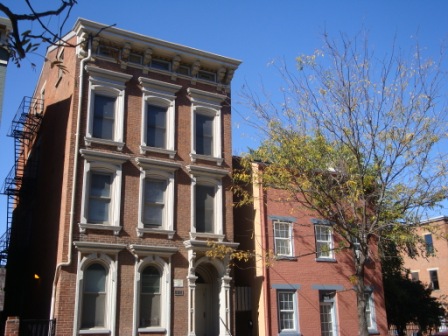King Gambrinus is European folk hero and beer aficionado – and traveled to Cincinnati on this mural … but who is he toasting?
Many consider one of the cities leading ladies to be the Roebling Suspension Bridge (the prototype for the Brooklyn Bridge)
Cincinnati’s own Genius of Water is the one toasting King Gambrinus while she is leaning against the bridge – but they are actually toasting the city’s beer making tradition.
By 1850, Cincinnati’s population was over 20% German.
The wave of German immigrants into Cincinnati have given this area numerous traditions: such as Oktoberfest Zinzinnati (one of the Oktoberfests outside of Munich), Music Hall (an outstanding venue), and beer.
“Cincinnati is one of the great brewing centers of the continent…. The Cincinnati brewers fear no competition, because the excellence and fame of their brews create a demand for them even in cities whose brewers have a greater aggregate capital invested.” (Over the Rhine Historic Brewery District)
Fertile farmland, excellent transportation options, and the German heritage fueled Cincinnati’s brewing industry.
The first brewery started in 1812, and grew to almost 40. By 1890, Cincinnati brewers production of 1.115 million barrels was the 3rd largest (per capita) in the country.
That’s 40 gallons (151.4 liters) per year for each person resident – including children.
Cincinnati’s breweries and associated activities such as shipping, cooperage, malting, farming, and of course drinking; at one time was one of the largest industries in the city.
Beer gardens became social centers.
Prohibition (11919) drove the brewers and the associated companies out of business. Although many of the buildings still stand today, outside of local craft brewers, Sam Adams is the only active brewer in this part of the city. On a wall outside the Adam’s facility at 1625 Central Parkway, “Cheers to Cincy, Past and Present” celebrates Cincinnati’s brewery heritage.
PS: Another ArtWorks mural dedicated to beer in Cincinnati is about 10 blocks away.
Additional Information
- This mural is an another project by ArtWorks Cincinnati.
- The ArtWorks page to this mural
- A toast to Resa who inspires me to look at public murals

